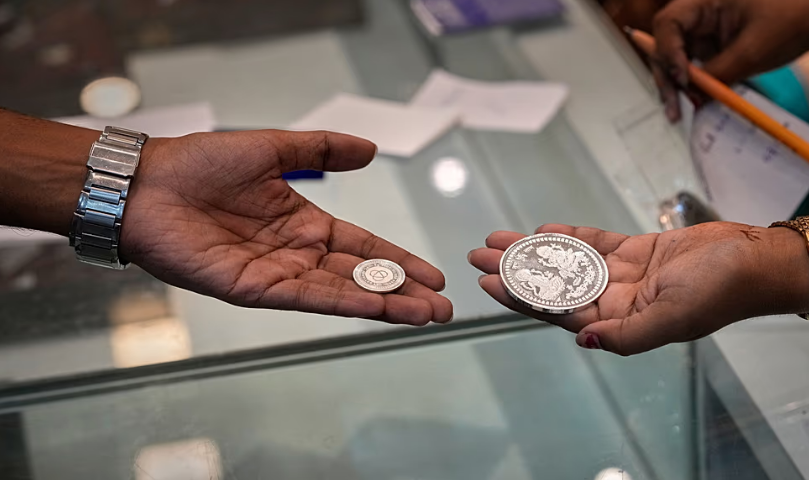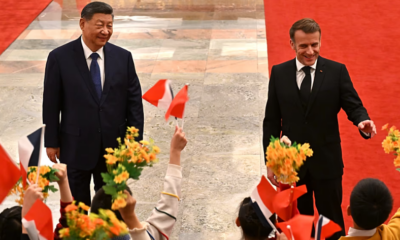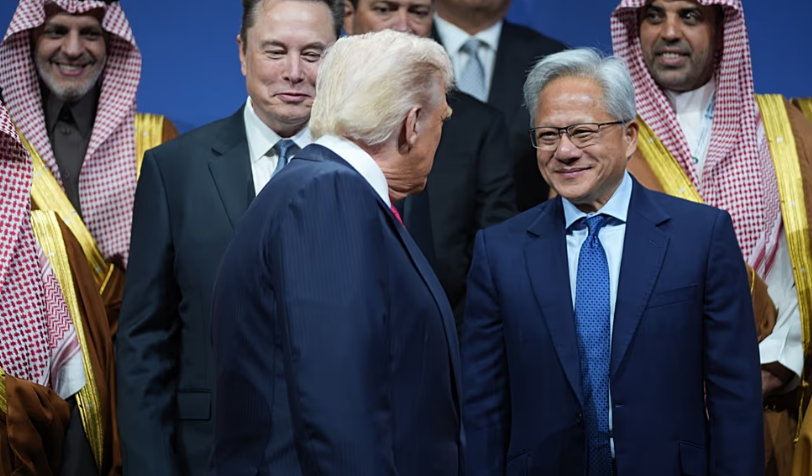Business
Arm Holdings to Manufacture Its Own Chips, Competing with Clients
British semiconductor firm Arm Holdings plc is set to enter the chip manufacturing market in 2025, a move that could put it in direct competition with some of its biggest clients, including Qualcomm, Nvidia, and Apple.
The decision, first reported by the Financial Times, marks a strategic shift for Arm, which has traditionally focused on designing and licensing processor architecture rather than producing its own chips. The company is expected to unveil its first chip as early as summer 2025.
Arm Shares Surge on News
Following reports of its expansion into chip manufacturing, Arm’s shares jumped more than 6% on Friday morning, reflecting investor confidence in the company’s potential revenue and profit growth.
Arm has already secured Meta Platforms Inc. as an early client, signaling its ambitions to become a key player in the semiconductor industry. This shift could disrupt the AI and data center markets, where Arm-designed processors are widely used.
Industry Impact and Potential Conflicts
The move could also create tensions with existing clients, as Arm transitions from being a neutral supplier to a direct competitor. According to Reuters, Arm has been actively recruiting executives from its current customers to support its transformation into a chip manufacturer, with a focus on AI-driven data center solutions.
One of the biggest rivalries emerging is between Arm and Qualcomm, as both companies are competing to provide data center CPUs for Meta. This follows an earlier dispute in 2022, when Arm sued Qualcomm over its acquisition of startup Nuvia, alleging a breach of licensing agreements. However, Arm ultimately lost the legal battle.
SoftBank’s Ownership and AI Expansion
Arm Holdings is currently owned by Japan’s SoftBank Group and is a critical supplier of processor intellectual property (IP) for industries ranging from smartphones and cars to AI infrastructure. The company is also a key technology partner in The Stargate Project, alongside Nvidia, Microsoft, OpenAI, and Oracle, which aims to strengthen U.S. AI capabilities.
Arm’s potential expansion into chip manufacturing adds another layer of competition in the already heated semiconductor industry. Nvidia, one of Arm’s major clients, is facing increased pressure from Chinese AI startup DeepSeek, which recently launched a cost-effective AI model. Any market shifts affecting Nvidia could also impact Arm’s business relationships and overall growth.
Despite the bold move, Arm has declined to comment on its reported manufacturing plans. However, if the company successfully transitions into a chip producer, it could reshape the global semiconductor landscape, challenging established industry leaders and redefining its own role in the market.
Business
Silver Surges Past $60 as Supply Strains, Rate Expectations and Tariff Concerns Drive Rally

Silver prices have surged to levels not seen before, rising above $60 an ounce this week after months of rapid gains driven by tightening supply, shifting Federal Reserve expectations and uncertainty around potential US trade actions. The metal hovered near $62 on Wednesday, extending a rally that began early this year when prices averaged around $30.
The latest jump came ahead of the Federal Reserve’s meeting, where investors expect another cut to the benchmark interest rate. The timing of the central bank’s leadership transition has added another layer of speculation. The US administration is reviewing finalists to replace Jerome Powell as chair, with Kevin Hassett, a senior economic adviser during Donald Trump’s presidency, reported to be the leading contender.
Market analysts say the candidates under consideration favour sharper rate reductions than those overseen by Powell. Since September, the Fed has trimmed rates twice by a quarter point each time. The gentler pace of easing has already pressured returns on cash and fixed-income assets, prompting many investors to shift into precious metals, which typically attract interest when rates fall. Silver, which does not generate yield, becomes more appealing in such an environment. Its performance has even outpaced gold, which has risen about 60 percent this year to reach record highs.
At the same time, traders are monitoring signals from Washington about whether silver could be targeted with tariffs. The metal was added in early November to the US government’s 2025 Critical Minerals List, a classification usually applied to resources seen as essential for national economic security. The designation places silver within the range of potential Section 232 investigations, the mechanism used in past years to justify tariffs on imported steel and aluminium.
Section 232 allows restrictions on imports deemed to put the country at risk through heavy dependence on overseas supply. No investigation has been launched, and officials have not indicated that tariffs are imminent. Still, the possibility has unsettled markets. Any duties on imported silver could reshape trade patterns and raise costs for domestic manufacturers, leading some buyers to boost inventories as a precaution.
Industrial use is also adding upward pressure. Demand from electric vehicle and solar panel manufacturers continues to rise, with these sectors relying on silver for components essential to production. Industrial consumption represents more than half of global silver use, and the combination of tight supply and strong manufacturing needs has intensified the rally.
Analysts say the market remains highly sensitive to signals from the Fed and the White House, with both interest-rate policy and trade decisions poised to shape the direction of prices in the months ahead.
Business
US Allows Nvidia to Sell H200 Chips to Approved Chinese Customers With 25% Surcharge
Business
Gold Looks to 2026 After a Record-Breaking Year Marked by Geopolitical Tension and Strong Central Bank Demand
-

 Entertainment1 year ago
Entertainment1 year agoMeta Acquires Tilda Swinton VR Doc ‘Impulse: Playing With Reality’
-

 Business2 years ago
Business2 years agoSaudi Arabia’s Model for Sustainable Aviation Practices
-

 Business2 years ago
Business2 years agoRecent Developments in Small Business Taxes
-

 Home Improvement1 year ago
Home Improvement1 year agoEffective Drain Cleaning: A Key to a Healthy Plumbing System
-

 Politics2 years ago
Politics2 years agoWho was Ebrahim Raisi and his status in Iranian Politics?
-

 Business1 year ago
Business1 year agoCarrectly: Revolutionizing Car Care in Chicago
-

 Sports1 year ago
Sports1 year agoKeely Hodgkinson Wins Britain’s First Athletics Gold at Paris Olympics in 800m
-

 Business1 year ago
Business1 year agoSaudi Arabia: Foreign Direct Investment Rises by 5.6% in Q1





























